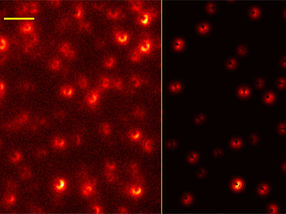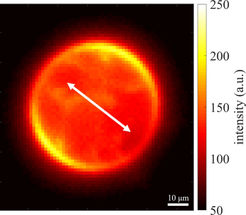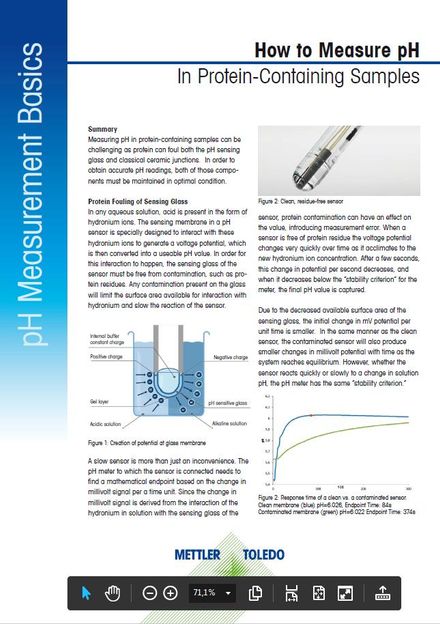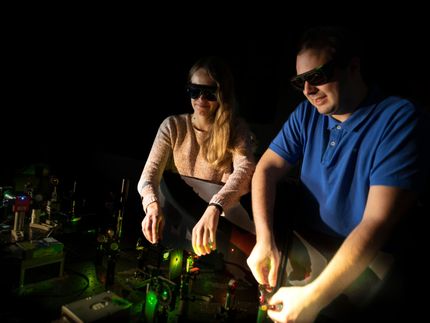Graphene layer enables advance in super-resolution microscopy
Eesearchers develop a new method allowing ten-fold improvement in optical resolution
Researchers at the University of Göttingen have developed a new method that takes advantage of the unusual properties of graphene to electromagnetically interact with fluorescing (light-emitting) molecules. This method allows scientists to optically measure extremely small distances, in the order of 1 ångström with high accuracy and reproducibility for the first time. This enabled researchers to optically measure the thickness of lipid bilayers, the stuff that makes the membranes of all living cells.

On the left: Image of single molecules on the graphene sheet. Such images allow scientists to determine the position and orientation for each molecule. Comparison with the expected image (right) shows excellent agreement.
University of Göttingen

A dye labelled membrane seen under polarized light (arrow). This shows that molecules are oriented along the perimeter of the membrane.
University of Göttingen


Researchers from the University of Göttingen led by Professor Enderlein used a single sheet of graphene, just one atom thick (0.34 nm), to modulate the emission of light-emitting (fluorescent) molecules when they came close to the graphene sheet. The excellent optical transparency of graphene and its capability to modulate through space the molecules' emission made it an extremely sensitive tool for measuring the distance of single molecules from the graphene sheet. The accuracy of this method is so good that even the slightest distance changes of around 1 ångström can be resolved. The scientists were able to show this by depositing single molecules above a graphene layer. They could then determine their distance by monitoring and evaluating their light emission. This graphene-induced modulation of molecular light emission provides an extremely sensitive and precise "ruler" for determining single molecule positions in space. They used this method to measure the thickness of single lipid bilayers which are constituted of two layers of fatty acid chain molecules and have a total thickness of only a few nanometers (1 billionth of a meter).
"Our method has enormous potential for super-resolution microscopy because it allows us to localise single molecules with nanometre resolution not only laterally (as with earlier methods) but also with similar accuracy along the third direction, which enables true three-dimensional optical imaging on the length scale of macromolecules," says Arindam Ghosh, the first author of the paper.
"This will be a powerful tool with numerous applications to resolve distances with sub-nanometer accuracy in individual molecules, molecular complexes, or small cellular organelles," adds Professor Jörg Enderlein, the publication's corresponding author and head of the Third Institute of Physics (Biophysics) where the work took place.
Original publication
Other news from the department science

Get the chemical industry in your inbox
By submitting this form you agree that LUMITOS AG will send you the newsletter(s) selected above by email. Your data will not be passed on to third parties. Your data will be stored and processed in accordance with our data protection regulations. LUMITOS may contact you by email for the purpose of advertising or market and opinion surveys. You can revoke your consent at any time without giving reasons to LUMITOS AG, Ernst-Augustin-Str. 2, 12489 Berlin, Germany or by e-mail at revoke@lumitos.com with effect for the future. In addition, each email contains a link to unsubscribe from the corresponding newsletter.
Most read news
More news from our other portals
Last viewed contents
Meat_thermometer
Cardiac_stress_test
C3_carbon_fixation
Mode_shape

Light triggers gold in unexpected way - Mechanism to control output of a nanoscale antenna
Butanone
Tetragonal_polycrystalline_zirconia
Phase_constant
Molecular_engineering




























































